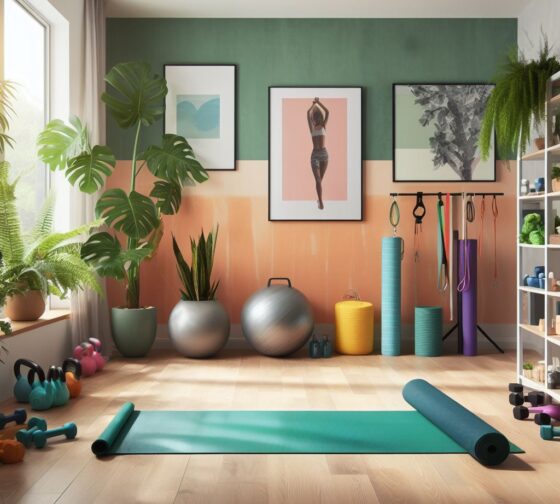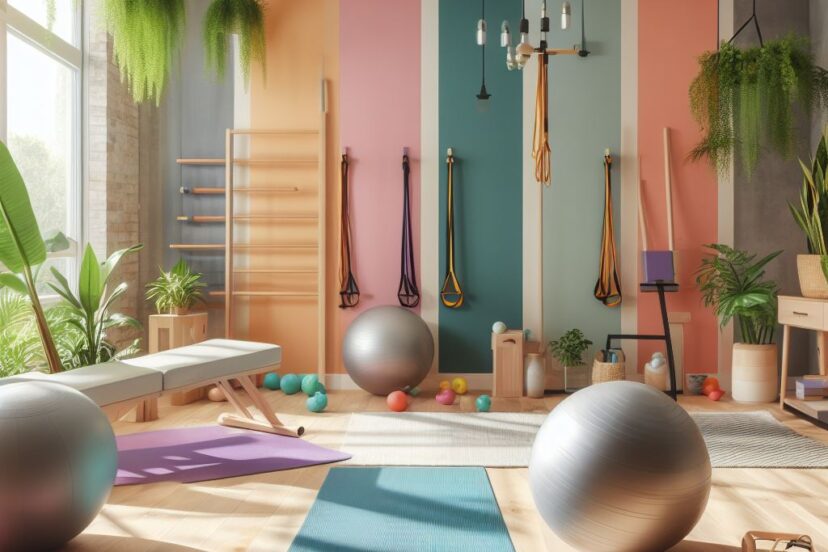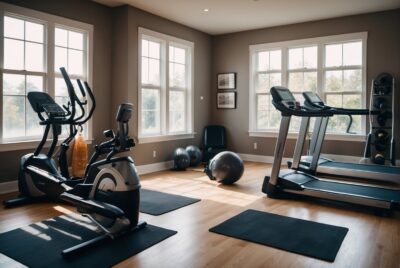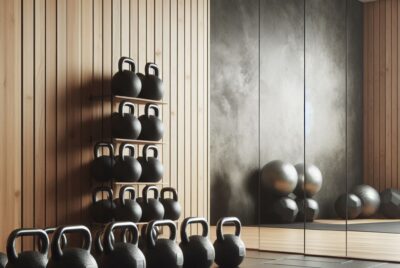Home Fitness: A Comprehensive Guide
*We may earn a commission for purchases made using our links. Please see our disclosure to learn more.
Embracing Home Fitness: A Comprehensive Guide
Introduction to Home Fitness
In recent years, home fitness has surged in popularity, driven by its convenience and the ability to tailor workouts to individual needs. Unlike gym workouts, home fitness offers a level of comfort and privacy that can be especially appealing. The benefits are numerous: it’s cost-effective, time-saving, and provides the flexibility to work out at any time. This introduction to home fitness will explore how to get started, set up your space, and create a routine that works for you.
Setting Up Your Home Fitness Space
A well-thought-out fitness space is crucial for a successful home workout regime. The space doesn’t have to be large; even a small area in your living room, bedroom, or garage can work. The key is to make it inviting and clutter-free. Essential equipment might include a yoga mat for floor exercises, free weights like dumbbells for strength training, and resistance bands for flexibility and strength exercises. If space and budget allow, consider investing in a cardio machine like a stationary bike or a treadmill. The ambiance of your workout space also matters; consider adding mirrors, motivational posters, or plants to create an inspiring environment.
Designing Your Home Workout Routine

The cornerstone of effective home fitness is a well-structured workout routine. It should cater to all aspects of fitness: cardiovascular health, strength, flexibility, and balance. Begin by assessing your fitness level and goals. Are you aiming to lose weight, build muscle, or improve general health? Your goals will dictate the types of exercises to include. A typical routine might alternate between cardio workouts, strength training sessions, and flexibility exercises like yoga or Pilates. It’s important to keep the routine varied to prevent boredom and ensure all-round fitness.
Effective Cardio Workouts at Home
Cardiovascular exercise is essential for heart health and weight management. At home, you can get an effective cardio workout without any equipment. Exercises like jumping jacks, burpees, and mountain climbers are excellent for raising your heart rate. If you have a jump rope or a cardio machine like a stationary bike or treadmill, these can add variety to your cardio workouts. Remember, consistency is key, so aim for at least 100 minutes of moderate-intensity cardio per week.
Strength Training Without the Gym
You don’t need a full gym setup for effective strength training. Bodyweight exercises like push-ups, planks, and lunges can be incredibly effective for building strength. If you have dumbbells or kettlebells, they can add intensity to your workouts. Resistance bands are also great for strength training; they’re versatile, easy to store, and work different muscle groups effectively. Strength training should be done at least two days a week, focusing on all the major muscle groups.
5 Home Fitness Recommendations
- Sunny Health & Fitness Mini Stepper: This exercise equipment is a low-impact stair step cardio machine that comes with resistance bands and a digital monitor. It optionally includes a twist motion stepper feature, making it versatile for various cardio workouts.
- Resistance Bands and Knee Mat Set: This set is ideal for core strength training and includes an abdominal roller machine along with gym accessories. It’s suitable for both men and women, emphasizing its versatility and ease of use for different types of exercises.
- SigridZ Thigh Master: A piece of home fitness equipment designed for working out arms, inner thighs, and overall body toning. This equipment is particularly noted for its effectiveness in weight loss and body trimming exercises.
- Pilates Bar Kit with Resistance Bands: The WeluvFit Pilates Bar Kit is a multifunctional exercise equipment suitable for both men and women. It includes a stainless steel stick and resistance bands for yoga, Pilates, and full-body shaping workouts.
- Auoplus Ab Roller: This ab roller is a simple yet effective tool for enhancing core workouts. It promotes balance, control, and can be instrumental in developing abdominal muscles. Its ease of use and effectiveness make it a popular choice for home workouts
Flexibility and Mobility Workouts
Flexibility and mobility are crucial for a well-rounded fitness routine and can greatly reduce the risk of injury. Stretching exercises should be a part of your daily routine, even on rest days. Yoga and Pilates not only improve flexibility but also enhance core strength and balance. These practices can be especially beneficial for mental health, providing a moment of calm and focus in your day.
Yoga and Pilates for Mind-Body Wellness

Yoga and Pilates are excellent for uniting the mind and body, offering benefits that extend beyond physical fitness. They improve posture, flexibility, and core strength, and can also be powerful tools for stress relief and mental clarity. Many online platforms offer classes for all levels, from beginners to advanced, making it easy to get started. Incorporating yoga or Pilates into your weekly routine can create a more balanced and holistic approach to fitness.
Nutrition and Diet for Home Fitness
Nutrition is a fundamental part of any fitness regime. A balanced diet, rich in fruits, vegetables, lean proteins, whole grains, and healthy fats, will fuel your workouts and aid recovery. Paying attention to meal timing can also optimize your energy levels and performance. Hydration is another key aspect, especially before and after workouts. Remember, nutrition needs vary depending on your fitness goals, whether it’s weight loss, muscle gain, or general health.
Tracking Your Progress
Monitoring your progress is essential for staying motivated and achieving your fitness goals. This can be as simple as keeping a workout log or using fitness apps to track exercises, sets, and reps. Measuring progress isn’t just about tracking weights or reps; it’s also about noticing improvements in your endurance, strength, and how you feel overall. Setting short-term and long-term goals can keep you focused and give you something to strive for.
- Fitbit Luxe Fitness and Wellness Tracker: This tracker features stress management, sleep tracking, and 24/7 heart rate monitoring. It’s designed to be both functional and stylish, offering a range of wellness insights.
- Amazfit Band 5 Activity Fitness Tracker: This tracker includes Alexa built-in, offers a 15-day battery life, and monitors blood oxygen, heart rate, sleep, and stress. It is also water-resistant, making it versatile for various fitness activities.
- Fitbit Inspire 2 Health & Fitness Tracker: This device comes with a free 1-year Fitbit Premium trial and offers 24/7 heart rate monitoring. It’s recognized for its comprehensive health and fitness tracking capabilities.
Staying Motivated
Staying motivated can be one of the biggest challenges of home fitness. To keep yourself engaged, set regular workout times and stick to them. Keeping your workouts varied and fun is also important; try new exercises or workout styles to keep things interesting. Remember why you started and the goals you’re aiming to achieve. Celebrate small victories along the way to keep your spirits high.
Incorporating Rest and Recovery

Rest and recovery are as important as the workouts themselves. They allow your muscles to repair and grow stronger. Ensure you have at least one full rest day per week and consider incorporating active recovery days with light activities like walking or yoga. Listen to your body; if you feel overly tired or sore, it might be a sign to take a break.
Community and Social Support
While home fitness means working out alone, you don’t have to go through your fitness journey in isolation. Online fitness communities offer support, advice, and motivation. You can share your progress, challenges, and tips with others who have similar goals. Virtual workout buddies or group classes can also provide a sense of camaraderie and accountability.
Safety Tips for Home Fitness and Workouts
Safety should be a top priority. Ensure your workout space is free of obstacles to prevent accidents. Use proper form to avoid injuries; if you’re unsure, seek advice from fitness professionals, either in person or through online resources. Start slow, especially if you’re new to exercise, and gradually increase the intensity of your workouts.
Evolving Your Home Fitness Routine
As your fitness improves, your routine will need to evolve to continue challenging your body. This could mean increasing the intensity of your workouts, adding new and more challenging exercises, or incorporating different styles of training. Regularly reassess your goals and adjust your routine accordingly to keep progressing.
Conclusion: Your Journey to a Fitter You
Home fitness is a journey of self-improvement and discipline. It offers the freedom to work out on your own terms and the opportunity to create a routine that fits your lifestyle. Remember, consistency is key, and with determination and the right approach, you can achieve your fitness goals from the comfort of your home.
FAQs
- How can I avoid getting bored with home workouts? To avoid boredom, try varying your workout routine, incorporating new exercises, and setting new fitness challenges regularly.
- Can home workouts be as effective as gym workouts? Absolutely! With the right equipment and a well-structured routine, home workouts can be just as effective as gym workouts.
- How do I balance cardio and strength training in my home workouts? A balanced routine could include 3 days of cardio and 2 days of strength training per week, with flexibility exercises incorporated regularly.
- What are some good resources for home workout ideas? Online fitness platforms, YouTube channels, and fitness apps offer a wealth of home workout routines for all fitness levels.
- How can I track my fitness progress at home? Using fitness apps, maintaining a workout journal, and setting measurable goals are effective ways to track your progress.




